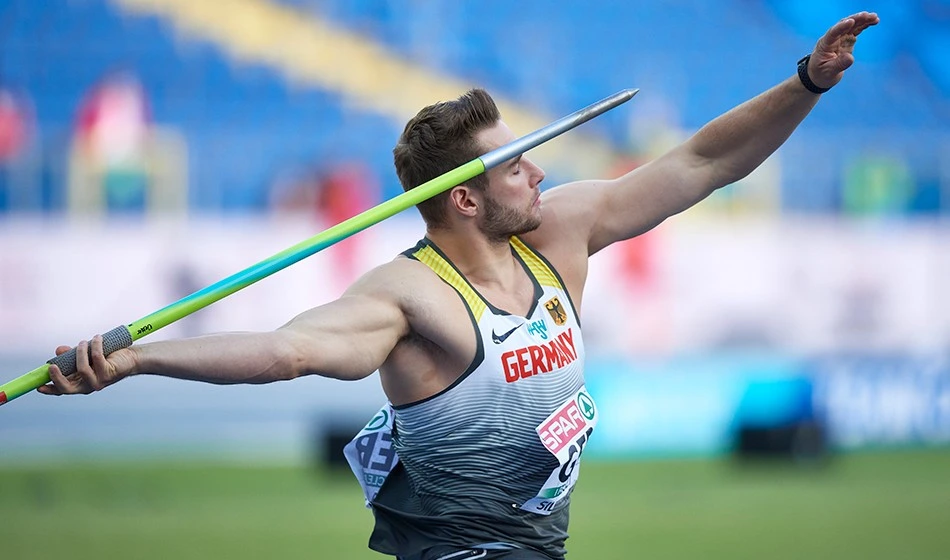
From ancient battlefields to modern Olympic arenas, the javelin throw is a track and field event steeped in history, power, and precision. It’s a sport that combines explosive athleticism with delicate technique, captivating audiences with its blend of raw strength and graceful flight. If you’ve ever watched a javelin arc through the air and wondered about the fascinating details behind this impressive discipline, you’re in the right place. Join us as we delve into some truly interesting facts about the javelin throw, exploring its ancient origins, modern evolution, and the remarkable athletes who have pushed its boundaries.
The javelin throw has a rich historical background, tracing its origins back to ancient Greece where it was an integral part of the pentathlon, a multi-event competition featured in the Olympic Games. This inclusion highlights the long-standing significance of throwing events in athletic prowess and competition.
Before its formalization as a sport, javelins served a practical and essential purpose in ancient societies. They were fundamental tools for hunting, allowing early humans to procure food, and formidable weapons employed in warfare, demonstrating their utility in both sustenance and defense.
The earliest documented javelin throw competition took place in 708 BC, an important milestone in the history of organized sports. This event was part of the 18th Olympiad, underscoring the early establishment and recognition of javelin throwing as a competitive discipline.
Ancient Greek athletes utilized javelins crafted from wood, which were often fitted with a metal tip. This design choice was not merely aesthetic but practical, as the metal tip contributed to better aerodynamics, allowing the javelin to cut through the air more efficiently and achieve greater distances.
The javelin throw’s popularity extended beyond Greece, finding its way into the ancient Roman games where it was known as “pilum.” This demonstrates the widespread appeal and adoption of javelin throwing as a form of athletic competition across different ancient civilizations.
When the modern Olympic Games were inaugurated in 1896, the men’s javelin throw was among the events included from its inception. This decision acknowledged the sport’s historical roots and its enduring appeal as a test of strength and skill.
The participation of women in the javelin throw at the Olympics came later, with its introduction in 1932. This marked a significant step towards greater inclusivity and recognition of women’s athletic achievements on the international stage.
Modern javelins have undergone significant advancements in materials, now being constructed from lightweight yet durable materials such as aluminum and carbon fiber. These material innovations are crucial for enhancing performance, allowing for greater rigidity, optimal weight distribution, and ultimately, longer throws.
Strict regulations govern the weight of modern javelins to ensure fair competition. For men, the javelin must weigh a minimum of 800 grams, while for women, the minimum weight is 600 grams, standardizing the equipment across all competitors.
The length of the javelin also varies by gender, adhering to specific regulations. Men’s javelins range from 2.6 to 2.7 meters in length, whereas women’s javelins are shorter, measuring between 2.2 to 2.3 meters, catering to the distinct physical attributes of male and female athletes.
To ensure a valid throw, athletes are required to land the javelin within a precisely defined sector. This sector is 28.96 degrees wide, providing a clear boundary for legal throws and adding an element of precision to the powerful throwing motion.
A fundamental rule for a valid javelin throw is that the javelin must land tip-first. If the javelin lands flat or tail-first, the throw is disqualified, emphasizing the importance of a correct release and flight path for scoring.
Athletes utilize a run-up before releasing the javelin, a critical component of the throwing technique. This run-up allows them to build significant momentum, which is then transferred to the javelin, contributing to the force and distance of the throw.
The grip on the javelin is paramount for effective throwing, with two primary techniques dominating the sport: the “American” grip and the “Finnish” grip. Each grip offers a unique way of holding the javelin, influencing the release and flight characteristics.
The throwing technique in javelin is a complex and highly coordinated athletic endeavor. It demands a synergistic combination of speed during the run-up, immense strength for the powerful release, and precise timing and body control to optimize the trajectory and distance.
The current men’s world record in javelin throw is an astonishing 98.48 meters, a feat achieved by Jan Železný in 1996. This record stands as a testament to the extreme limits of human athletic performance in this discipline.
The women’s world record for the javelin throw is an impressive 72.28 meters, set by Barbora Špotáková in 2008. This mark showcases the remarkable power and skill exhibited by elite female javelin throwers.
Uwe Hohn holds a unique place in javelin history, having achieved the longest throw ever recorded with the old javelin design, reaching an incredible 104.80 meters in 1984. This throw was so far that it prompted a significant rule change in the sport.
The design of the javelin underwent a crucial modification in 1986. This change was implemented to mitigate the risk of excessively long throws, as throws like Hohn’s were posing safety concerns by potentially landing beyond designated throwing areas.
The key alteration in the 1986 javelin design involved shifting its center of gravity further forward. This modification had a profound impact on the javelin’s flight, making it more stable and predictable in the air, thereby reducing the extreme distances seen with the old design.
Jan Železný from the Czech Republic is widely regarded as one of the greatest javelin throwers of all time, a testament to his unparalleled consistency, multiple Olympic gold medals, and his long-standing world record.
Barbora Špotáková, also hailing from the Czech Republic, has cemented her legacy as a dominant force in women’s javelin. Her achievements include winning two Olympic gold medals, demonstrating her exceptional talent and competitive spirit.
Andreas Thorkildsen from Norway left an indelible mark on the sport by winning consecutive gold medals in the javelin throw at the 2004 and 2008 Olympics, showcasing his enduring excellence and ability to perform under pressure.
Steve Backley from the United Kingdom was a formidable competitor who held the world record in javelin three times during his illustrious career. His multiple record-breaking performances highlight his sustained dominance in the sport.
Tero Pitkämäki from Finland is renowned for his consistent performances and impressive medal haul in javelin throw competitions. His ability to consistently deliver top-tier results has made him a respected figure in the sport.
To excel in javelin throw, athletes dedicate themselves to rigorous training that focuses on building a comprehensive set of physical attributes. This includes developing significant strength, maximizing speed, and enhancing flexibility through a variety of targeted exercises.
Plyometric training is a crucial component of a javelin thrower’s regimen, as it specifically targets the improvement of explosive power. This type of training, involving rapid stretching and contracting of muscles, is vital for generating the immense force needed during the run-up and release of the javelin.
Mastering the intricate technique of javelin throwing requires extensive and repetitive technique drills. These drills are essential for perfecting the grip, synchronizing the run-up with the throwing motion, and refining the overall release for optimal distance and accuracy.
Beyond physical training, mental preparation is a significant factor in an athlete’s performance in javelin throw. Techniques such as visualization, where athletes mentally rehearse their throws, and various focus techniques are employed to enhance concentration and confidence during competition.
Nutrition and recovery are not ancillary but vital components of a javelin thrower’s holistic training regimen. Proper nutrition fuels demanding workouts and aids in muscle repair, while adequate recovery periods are essential for preventing injury and allowing the body to adapt and grow stronger.
In Finland, the javelin throw enjoys immense popularity, to the extent that it is widely considered a national sport. This deep cultural connection highlights the sport’s historical significance and its enduring appeal within the country.
Frequently Asked Questions about Javelin Throw
1. What are the basic rules of the javelin throw? The javelin throw involves an athlete throwing a spear-like implement as far as possible. Several key rules govern a legal throw:
- Runway and Foul Line: Athletes use a designated runway, typically 30 to 36.5 meters long and 4 meters wide, to gain momentum. They must release the javelin before crossing or touching the foul arc (an 8-meter radius arc at the end of the runway). Stepping on or over this arc before the javelin lands results in a foul.
- Throwing Action: The javelin must be held by the grip, and the throw must be executed with an over-the-shoulder motion. The athlete is not allowed to turn their back completely to the throwing direction before releasing the javelin.
- Landing: The javelin must land tip-first within a specified throwing sector. This sector is precisely 28.96 degrees wide, extending outwards from the center of the foul arc. If any part of the javelin other than the tip touches the ground first, or if it lands outside the sector, the throw is deemed invalid.
- Measurement: The distance is measured from the closest point of the javelin’s tip mark on the ground to the inner edge of the foul arc, along a line perpendicular to the arc. The longest legal throw determines the winner.
2. How much does a javelin weigh for men and women? The weight of a javelin varies significantly between men’s and women’s competitions to account for differences in strength and physiology:
- Men’s Javelin: Must weigh at least 800 grams (approximately 1.76 pounds).
- Women’s Javelin: Must weigh at least 600 grams (approximately 1.32 pounds). These specifications are set by World Athletics (formerly IAAF) to ensure fair and standardized competition.
3. How long is a javelin for men and women? Just like weight, the length of the javelin is also standardized by gender:
- Men’s Javelin: Measures between 2.60 to 2.70 meters (approximately 8 feet 6 inches to 8 feet 10 inches).
- Women’s Javelin: Measures between 2.20 to 2.30 meters (approximately 7 feet 2.5 inches to 7 feet 6.5 inches). These dimensions, along with weight and center of gravity specifications, are crucial for the javelin’s flight characteristics and overall performance.
4. Why was the javelin design changed in 1986 (and 1999 for women)? What was the difference between the old and new designs? The javelin design was dramatically changed in 1986 for men (and a similar change in 1999 for women) primarily for two reasons:
- Safety Concerns: Throws were becoming excessively long, with athletes like Uwe Hohn throwing over 100 meters (104.80m in 1984 with the old design). This posed a significant safety risk as javelins could potentially land beyond the confines of typical stadium throwing areas, endangering spectators and officials.
- Problem with Flat Landings: The old design, sometimes referred to as “aerodynamic” javelins, often produced “flat landings” where the javelin would land horizontally or tail-first, making it difficult for officials to determine a valid mark and leading to disputes. The Key Difference: The new design involved shifting the javelin’s center of gravity forward by approximately 4 centimeters (for men’s javelins). This seemingly small change had a profound impact:
- Steeper Descent: Moving the center of gravity forward causes the javelin to nose-down earlier in its flight path. This results in a steeper angle of descent, increasing the likelihood of a tip-first landing and reducing the overall flight distance.
- Reduced Aerodynamic Lift: The old designs had characteristics that generated more aerodynamic lift, similar to an airplane wing, allowing for longer, flatter flights. The new design aims to minimize this lift, making the flight more predictable and limiting extreme distances. The change successfully addressed both safety concerns and the issue of flat landings, while still allowing for impressive, albeit slightly shorter, throws.
5. What is the throwing sector for javelin and how wide is it? The throwing sector is the designated area on the field where the javelin must land for a throw to be valid. It is defined by two lines originating from the center of the throwing arc and extending outwards. The width of this sector is precisely 28.96 degrees. This strict angle ensures that throws are directed within a safe and measurable area.
6. What are the common javelin grips, and how do they differ? The grip on the javelin is fundamental to a successful throw, influencing the javelin’s release and flight. The two most common grips are:
- Finnish Grip: This is arguably the most widely used grip. The javelin rests diagonally across the palm, with the middle finger wrapped around the cord (grip) and the index finger extended along the shaft, often pressing against the back of the cord. The thumb and other fingers provide support and control. The extended index finger acts as a guide, providing precision and helping to impart a slight spin for stability.
- American Grip: Similar to the Finnish grip, but with a key difference: the index finger is curled and pressed into the back of the cord, while the middle finger is extended along the shaft. Some throwers find this grip offers a different feel for imparting force and spin. There is also a “Fork Grip” where the index and middle fingers are split around the cord, but it is less common at elite levels. The choice of grip often comes down to individual preference, comfort, and what allows the athlete to generate the most power and control.
7. Who holds the world records in javelin throw for men and women? The current world records for the javelin throw are:
- Men’s World Record: 98.48 meters (323 feet 1 inch), set by Jan Železný of the Czech Republic on May 25, 1996, in Jena, Germany. Železný is widely considered the greatest javelin thrower of all time.
- Women’s World Record: 72.28 meters (237 feet 1 inch), set by Barbora Špotáková of the Czech Republic on September 13, 2008, in Stuttgart, Germany. Špotáková is also a multiple Olympic gold medalist and one of the sport’s most dominant figures.
8. What are some of the key techniques involved in a javelin throw? The javelin throw is a highly technical event that combines speed, strength, and coordination. Key technical elements include:
- The Run-up: Athletes accelerate down the runway to build horizontal momentum. This run-up typically involves 13-19 strides for senior athletes and is carefully choreographed to maximize speed while maintaining control.
- Withdrawal/Transition: As the athlete approaches the foul line, they smoothly transition from the run-up into the “withdrawal” phase, where the javelin is drawn back behind the body.
- Five-Step Rhythm (or Crossover Steps): This is a critical sequence of rapid, coordinated steps (often involving a “crossover” step) that helps the athlete get into a powerful throwing position, transferring momentum from the legs and hips to the upper body.
- Power Position: The athlete reaches a fully stretched and loaded position, with the throwing arm extended back, the non-throwing arm forward, and the body coiled like a spring.
- Delivery/Release: This is the explosive phase where the athlete drives forward with their legs and hips, rotating the torso, and finally unleashing the javelin with a powerful arm and shoulder action. The javelin is released at an optimal angle (typically around 36 degrees from horizontal, not 45, due to the release point being higher than the landing point) to maximize distance.
- Recovery/Reverse: After release, athletes must quickly brake and often “reverse” or follow through with their body to avoid stepping over the foul line.
9. Who are some of the most famous javelin throwers in history? The javelin throw has been graced by many legendary athletes:
- Jan Železný (Czech Republic): Widely regarded as the greatest ever, holding the men’s world record (98.48m) and three Olympic gold medals.
- Barbora Špotáková (Czech Republic): Women’s world record holder (72.28m) and a two-time Olympic champion.
- Uwe Hohn (East Germany): Famous for his 104.80m throw in 1984 with the old javelin design, prompting the implement’s redesign.
- Andreas Thorkildsen (Norway): Double Olympic gold medalist (2004, 2008) known for his consistent top-level performances.
- Steve Backley (Great Britain): A dominant figure in the 1990s, holding the world record three times and winning multiple Olympic and World Championship medals.
- Tero Pitkämäki (Finland): A consistent medalist and world champion from Finland, where javelin is considered a national sport.
- Neeraj Chopra (India): A more recent superstar, becoming India’s first track and field Olympic gold medalist in javelin throw at Tokyo 2020.








